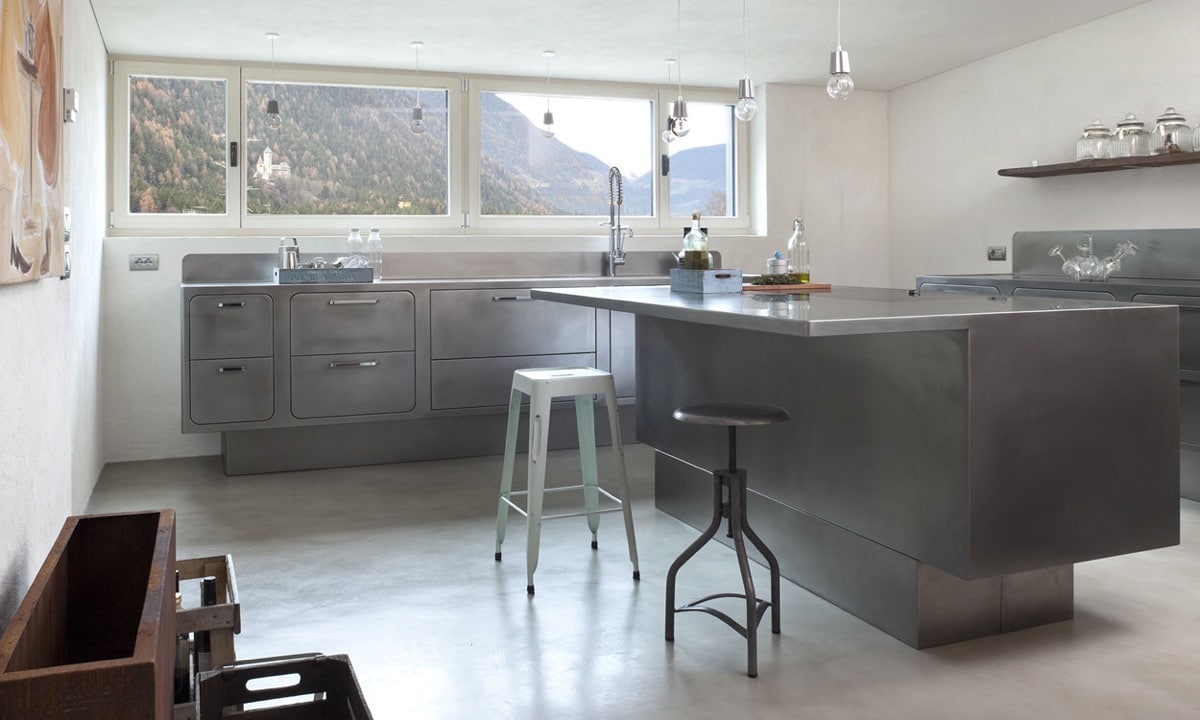
Stainless steel is possibly the most versatile material for kitchen equipment, from pans to utensils, appliances and countertops. It is very present in homes around the world and that is why it is so important to know how to treat it and how to maintain it well.
It is extremely durable, highly resistant to corrosion and practically heat resistant. But that doesn't mean it's bulletproof. Stainless steel can be damaged by abrasive sponges, the wrong types of cleaners, and even ordinary things like water and salt.
Despite its name and reputation, stainless steel can stain and rust. Following a few "basic tips" will help keep your stainless steel cookware in better condition. You just have to remember them to know how to take care of the stainless steel that is in your home.
Do not bleach stainless steel
While it may be second nature to bleach everything, stainless steel and chlorine don't mix. Don't have household chlorine bleach and other cleaners containing chlorine or chloride when cleaning stainless steel because it will damage it.

Keep in mind that bleach and chlorides can be included in different types of cleaners. If you accidentally put bleach on your stainless steel, you'll need to rinse it off quickly and thoroughly.
Don't forget to rinse
Sandy or dirty water can leave a residue on the finish. It can also stain or chip the surface of stainless steel. You have to make sure to rinse thoroughly. Similarly, residues from cleaning solutions left on a stainless steel surface can stain or damage the finish. Rinsing is a key component of cleaning stainless steel.
Therefore, Remember that when you are cleaning any utensil or stainless steel surface in your home, it is necessary that you rinse it well. If you don't, you run the risk of staining it and making it much more difficult to leave it in good condition later.

Don't use steel wool or steel brushes
Steel wool and steel brushes leave small particles on the surface of stainless steel. These particles eventually rust and can stain the surface of the steel. Steel wool and brushes are also abrasive and can scratch the surface of your stainless steel. Instead, use plastic scouring pads, scrubbers, or brushes, or use a soft cloth for general washing.
Soft cloths are usually the best option because they will leave the surface or the utensil very clean without having to run the risk of scratching it as It would happen if you use other cleaning products like the steel wool mentioned above.
Don't assume it's the cleanser
If it has some stains, and you've followed all the rules, it may not be the stainless steel cleaner. Water, especially hard water, can stain stainless steel surfaces. Towel drying after rinsing generally prevents problems. If you do not want to use a towel to dry your utensils or stainless steel surfaces, you can also use a soft cloth or even kitchen paper so that the finish is adequate.
Don't rub against the grain
Some stainless steel has a brushed look made up of little lines in the metal; This is the grain of the finish. For best results, always rub, clean, or polish stainless steel "with" (parallel to) the grain rather than "against" or across the grain. Grain cleaning cleans the surface and helps maintain the original finish and texture of the steel.

Don't grease a cold skillet
Stainless steel, like other metals, expands when heated. Allowing the pan to heat up before adding oil or other fat results in a more nonstick surface than starting with oil in a cold skillet. At the other end of the spectrum, burnt oil can be very difficult to remove from stainless steel.
The best way to clean up burnt oil is to soak it overnight in hot soapy water and then scrub it with a plastic scrubber. Better yet, avoid the problem entirely by using cast iron or enameled iron cookware for frying and cooking other than using a lot of oil heated for long periods.
Do not salt the water before boiling
Salt water in a stainless steel pot before heating the water can lead to pitting, small pieces of rust on the surface of the stainless steel. It is a simple mistake, but the bites are irreversible. Prevention is just as simple: let the water boil before adding salt. Just be careful to add a little bit at a time because adding salt to boiling water can make it boil more vigorously.